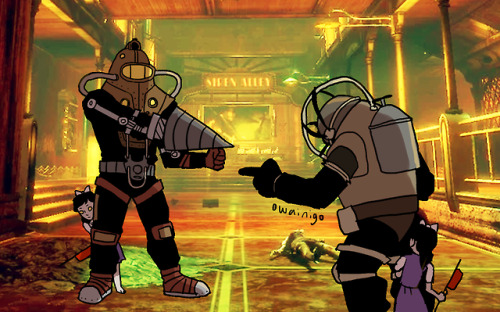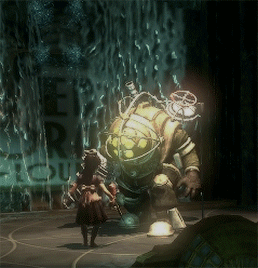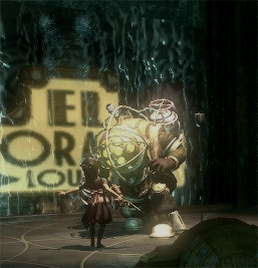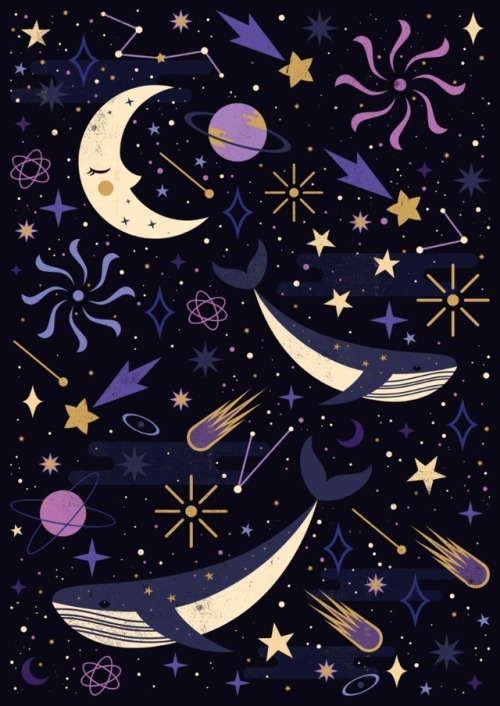54 posts
Latest Posts by sweet-alien-dreams - Page 2

I’m Not Freaking Out - Submitted by Pata-Pon-Don-Chaka
#3fafc7 #f66d89 #faadbc #fec4c3 #654b59

Mail-ghost is sending so much love! Delivered through Chibird Mail Express, where every letter is stamped with love and care.
Webtoon | Patreon | Instagram

Disobeying the Cuckoo - Submitted by SeesawSiya
#2c2326 #703128 #a56050 #e0d5c3 #7dafa4
5 Out-of-This World Technologies Developed for Our Webb Space Telescope
Our James Webb Space Telescope is the most ambitious and complex space science observatory ever built. It will study every phase in the history of our universe, ranging from the first luminous glows after the Big Bang, to the formation of solar systems capable of supporting life on planets like Earth, to the evolution of our own Solar System.

In order to carry out such a daring mission, many innovative and powerful new technologies were developed specifically to enable Webb to achieve its primary mission.
Here are 5 technologies that were developed to help Webb push the boundaries of space exploration and discovery:
1. Microshutters

Microshutters are basically tiny windows with shutters that each measure 100 by 200 microns, or about the size of a bundle of only a few human hairs.
The microshutter device will record the spectra of light from distant objects (spectroscopy is simply the science of measuring the intensity of light at different wavelengths. The graphical representations of these measurements are called spectra.)

Other spectroscopic instruments have flown in space before but none have had the capability to enable high-resolution observation of up to 100 objects simultaneously, which means much more scientific investigating can get done in less time.
Read more about how the microshutters work HERE.
2. The Backplane

Webb’s backplane is the large structure that holds and supports the big hexagonal mirrors of the telescope, you can think of it as the telescope’s “spine”. The backplane has an important job as it must carry not only the 6.5 m (over 21 foot) diameter primary mirror plus other telescope optics, but also the entire module of scientific instruments. It also needs to be essentially motionless while the mirrors move to see far into deep space. All told, the backplane carries more than 2400kg (2.5 tons) of hardware.

This structure is also designed to provide unprecedented thermal stability performance at temperatures colder than -400°F (-240°C). At these temperatures, the backplane was engineered to be steady down to 32 nanometers, which is 1/10,000 the diameter of a human hair!
Read more about the backplane HERE.
3. The Mirrors

One of the Webb Space Telescope’s science goals is to look back through time to when galaxies were first forming. Webb will do this by observing galaxies that are very distant, at over 13 billion light years away from us. To see such far-off and faint objects, Webb needs a large mirror.
Webb’s scientists and engineers determined that a primary mirror 6.5 meters across is what was needed to measure the light from these distant galaxies. Building a mirror this large is challenging, even for use on the ground. Plus, a mirror this large has never been launched into space before!

If the Hubble Space Telescope’s 2.4-meter mirror were scaled to be large enough for Webb, it would be too heavy to launch into orbit. The Webb team had to find new ways to build the mirror so that it would be light enough - only 1/10 of the mass of Hubble’s mirror per unit area - yet very strong.
Read more about how we designed and created Webb’s unique mirrors HERE.
4. Wavefront Sensing and Control

Wavefront sensing and control is a technical term used to describe the subsystem that was required to sense and correct any errors in the telescope’s optics. This is especially necessary because all 18 segments have to work together as a single giant mirror.
The work performed on the telescope optics resulted in a NASA tech spinoff for diagnosing eye conditions and accurate mapping of the eye. This spinoff supports research in cataracts, keratoconus (an eye condition that causes reduced vision), and eye movement – and improvements in the LASIK procedure.
Read more about the tech spinoff HERE.
5. Sunshield and Sunshield Coating

Webb’s primary science comes from infrared light, which is essentially heat energy. To detect the extremely faint heat signals of astronomical objects that are incredibly far away, the telescope itself has to be very cold and stable. This means we not only have to protect Webb from external sources of light and heat (like the Sun and the Earth), but we also have to make all the telescope elements very cold so they don’t emit their own heat energy that could swamp the sensitive instruments. The temperature also must be kept constant so that materials aren’t shrinking and expanding, which would throw off the precise alignment of the optics.

Each of the five layers of the sunshield is incredibly thin. Despite the thin layers, they will keep the cold side of the telescope at around -400°F (-240°C), while the Sun-facing side will be 185°F (85°C). This means you could actually freeze nitrogen on the cold side (not just liquify it), and almost boil water on the hot side. The sunshield gives the telescope the equivalent protection of a sunscreen with SPF 1 million!
Read more about Webb’s incredible sunshield HERE.
Learn more about the Webb Space Telescope and other complex technologies that have been created for the first time by visiting THIS page.
For the latest updates and news on the Webb Space Telescope, follow the mission on Twitter, Facebook and Instagram.
Make sure to follow us on Tumblr for your regular dose of space: http://nasa.tumblr.com.

Pastel Bubblegum Beads - Submitted by Zedetta
#ffddd1 #f0c9d7 #d4c2e1 #bdd7ea #c0f0f4
[image used]

Cotton Candy - Submitted by DreamingInsomniac
#fff8e7 #feeadb #fcdbce #ccedce #9cffce

Faded Twilight - Submitted by Marmalade-Skeleton-Gem
#17111C #332C38 #837283 #AC99A7 #D2C5CB


You’re doing great! 🐟❤️ I know it can be tough, but you’re surviving and making it work!
Instagram | Patreon | Webtoon

Raspberry Pink Rock - Submitted by Celandina
#e1c7d9 #e0b2ca #685e72 #9ebac9 #e8eaf6

















